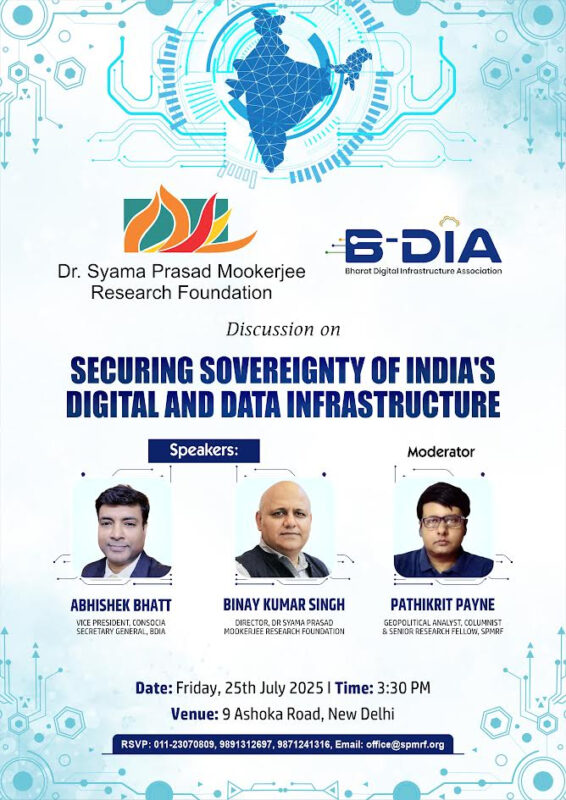Against the backdrop of a tumultuous global economic environment, with major conflicts in Middle-East and Eastern Europe having serious impact on global supply chains and prices of critical commodities, India recently witnessed it forex reserve breaching the $700 billion mark. This marks as a benchmark and testimony of India’s growth story that continues to impress the world, especially at a time when most major and middle economies of the world, have been facing major instability. Over the last 10 years, PM Modi led NDA Government went in for major restructuring of the Indian economy, by ushering in a series of crucial structural reforms such as implementation of GST and Insolvency & Bankruptcy Code Act, followed by major investments in developing the digital framework for effective execution of welfare schemes, as well as massive push for infrastructure development that encompasses spending in excess of Rs 100 lakh crore to increase the infrastructural capacity of Indian economy to absorb investments.
These initiatives along with the PLI scheme to push for making India as a preferred hub of global manufacturing, played critical roles in making India emerge as the fifth largest economy of the world. One should also not forget the massive initiatives taken by Modi Government to successfully combat the Covid and Post Covid challenges.
Against this backdrop, continuity in the investments, welfare schemes and reform process, was crucial. It was because of these reasons that the mandate which Modi Government got for the third term is extremely critical. The first full budget of the third term of Modi Government was thus expected to carry on the momentum in these spheres, and it indeed lived up to its expectations.
The nine major focus areas of the budget have been the following:-
- Productivity and resilient in Agriculture
- Employment and Skilling
- Inclusive Human Resource Development and Social Justice
- Manufacturing & Services
- Urban Development
- Energy Security
- Infrastructure
- Innovation, Research and Development
- Next Generation Reforms
A critical aspect of the budget this year has been the focus on skilling. As part of it, five schemes were announced. This includes
- Scheme A for First Timers, who would be provided with a one-month salary up to Rs 15,000/- that would be provided to them in three instalments, once registered in EPFO.
- Scheme B that Incentivizes both Employers and Employees towards their EPFO contributions in the first four years of employment.
- Scheme C focuses on support to Employers with reimbursement of up to Rs 3000 per month for two years of EPFO contribution, for every additional person employed.
- Additionally, 20 lakh youth are to be skilled over a period of five years, and 1000 Industrial Training Institutes (ITIs) are to be upgraded.
- Also, this budget initiated a new scheme for internship programs for 1 crore youth in top 500 companies in India.
While continuing with budgetary support of Rs 1.52 lakh crore for the agriculture and allied sectors, the budget focused specifically on release of 109 varieties of high-yielding and climate resilient crops, and development of 10,000 need-based resource centers for development of natural farming.
This apart, the budget gave special focus on development of new industrial corridors, enhancing the MUDRA loan limit from Rs 10 lakh to Rs 20 Lakh, development of E-commerce export hubs under the Public Private Partnership (PPP) model, enhancing the scope of exploration, production and recycling of critical minerals on a mission mode, as well as expansion of the Digital Public Infrastructure (DPI) applications to include areas such as e-commerce, education, health, law and justice, logistics, MSME, service delivery and e-governance.
Some of the other interesting features of the budget included a strategy to formulate Transit Oriented Development Plan to ‘implement and finance’ 14 large cities with population above 30 lakh, and continued emphasis on PM Awas Yojana to provide affordable housing for 1 crore urban poor and middle-class families.
A striking feature of this year’s budget has been the unprecedented level of funds earmarked for capital expenditure which is to the tune of Rs 11.11 lakh crore, in addition to special focus on research and innovation funding. The Anusandhan National Research Fund for financing of basic and prototype development with a corpus of Rs 1 lakh crore to drive private-sector based research and innovation at commercial scale is a great step forward.
This apart, introduction of Unique Land Parcel Identification Number (ULPIN) or Bhu-Aadhar for digitization of cadastral maps and establishment of land registry is also a positive initiative.
The emphasis of the Budget on Purvodaya, that envisages all-round development of eastern parts of India including Bihar, Jharkhand, West Bengal, Odisha and Andhra Pradesh is also a welcome step
Interestingly, the budget this year has also earmarked more than Rs 3 lakh crore for schemes that are aimed at women and girl child development, apart from earmarking Rs 2.66 lakh crore for rural development, especially for development of rural infrastructure.
The budget this year also earmarked Rs 6.21 lakh crore for defence sector. Of this, Rs 1.72 lakh crore has been committed for capital expenditure, which means acquisition of weapon systems, while Rs 92,000 crore has been put for ‘sustenance and operational readiness’ of Armed Forces. Home Ministry meanwhile has been allocated Rs 2.19 lakh crore. This is important given the necessity for modernization of central police forces, as well as central investigation and law enforcement agencies, to deal with sub conventional threats that India.
While overall the budget is extremely positive that takes forward the momentum of continuity and growth story, in Modi era, announcement of policy measures is not restricted to annual budget alone. Interestingly, a few days after the Budget announcements, Modi Government expanded the Ayushman Bharat Scheme to include every Indian who has crossed the age of 70 years, thereby making them automatically eligible for Rs 5 lakh of medical insurance. This is perhaps one of the biggest social welfare schemes undertaken by any country. Simultaneously, Modi Government also recently approved 12 Industrial cities under the National Industrial Corridor Development Program that has the potential to eventually generate more than 10 lakh direct jobs.
Further Modi Government also recently approved disbursement of fortified rice under Pradhan Mantri Garib Kalyan Anna Yojana, Integrated Child Development Service and PM Poshan till December 2028. This scheme has major positive impact in terms of addressing issues of anemia and micro-nutrient deficiencies among the beneficiaries.
Last but not the least, Modi Government has ensured the maintenance of perfect balance between economic development, industrial growth and welfare schemes in its policy framework matrix. The reason being that funding of welfare measures can only be sustained in the long run by any country if the economy continues to grow and generate enough revenue for people and the state. It is from this perspective, Modi Government, which has been striving hard to revive India’s proficiency as a global manufacturing hub, has taken several initiatives in the last one decade. From emphasis on expansion of the space economy with a Rs 1000 crore venture fund, to abolition of Angel Tax for all types of investors, to reduction of corporate tax on foreign companies from 40% to 35% to attract more investments, to reduction of customs duty on various kinds input commodities, a whole array of measures has been taken, in this budget as well, to ensure India’s economy reach the $5 trillion mark in the next few years.
The world is expected to have major turmoil in the next few years and in the middle of such a situation having a stable government which can ensure India’s all round economic and social growth has been of utmost necessity. Modi Government’s third term ensures stability along with growth. Modi Government’s Budget for 2024 perfectly exemplifies that.
(The views expressed are the author's own and do not necessarily reflect the position of the organisation)


